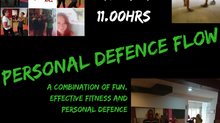Systems of Personal Defence - Which is the best one?
- Ian
- May 8, 2019
- 4 min read

In the diverse and varied subject of personal defence there are a myriad of potential protective systems and techniques. Each system (traditional martial arts, modern or military fighting systems) understandably roots itself as the one correct “way”. They affirm that the processes and techniques they offer are the most effective and efficient manner in which someone can protect themselves from physical confrontation. For most outside of the martial arts fraternity it is extremely challenging to assess the validity of these systems and decide which is indeed fits best for them.
To begin here and as a simple rule of thumb, there’s no substitute for personal experience. The very diversity of martial arts and fighting systems available means that one could participate in two different “styles” and have two very different experiences. By experience here it’s not just the service provide and atmosphere of the class. Experience refers to how the you feel within the movements, how much you “fit” with the style and techniques. Put another way how natural these movements feel to you. Whilst clearly it’s worth considering that proficiency in any new physical skill adopted takes repeated practice and rehearsal, often we instinctively know what feels right to us and indeed what we are actually physically comfortable doing.
The diversity of striking, grappling and combative systems provide opportunity to investigate issues connected with personal defence from a diversity of ranges and tactical strategies. Some advocate maintaining longer ranges, with long, liner movements. Others advocate closing distance and directly grappling, manipulating balance, posture and the structures of the opponent. Whilst there’s no hard and fast rules (and individual preferences will always exist) certain body types, lever lengths, joint structures (affecting relative flexibility and range of movement) etc. will serve to make certain styles potentially feel more comfortable and natural in their movements. The fundamental point here is the more comfortable the movement, the more natural it feels and “fits”, we will express those movements with more fluidity. As discussed in previous blogs the issue of flow is essential to the successful and effective provision of any form personal defence.

The basic principle here is that there is no “correct” or “best” system for personal defence. The nature of a “system” ultimately makes conclusions and imposes linear processes about a subject which does not follow linear rules or concrete conclusions. What we have then is a collection of linear processes based on educated guesswork (as to what form potential attacks/conflict will take), designed by individuals (or groups) with specific body types and individual factors. The successful application of these systems then depends on how well the student can assimilate it and adapt themselves to fit the system or the system to fit their own individual factors. The effectiveness of that system is based on it’s efficiency and natural flow when performed by that individual. Considered in this way, all systems have a potential merit and a potential level of effectiveness. If an individual develops proficiency, assimilating, accommodating and adapting the system and themselves to the point of natural and flowing “expression”, there exists a strong opportunity for successful use in personal defence.
A further essential determinant in the successful provision is “intention”. A punch is a punch, a kick is a kick. They are fundamentally simple movements and whilst technically we can train to generate more efficiency, force and power, it is intention that drives the successful application of these movements for personal defence. The same is true for some of the more seemingly esoteric movements in some martial arts forms and systems. If the practitioner can perceive and understand a movement, it’s technical application and naturally express this, their intention ultimately determines the success (or otherwise) of it’s application.
With correct intention, even some of the more “soft” forms (such as tai chi) of martial arts can be used to provide effective personal defence.
The key determiners in effectiveness of a personal defence system are then individual natural technical proficiency (accumulated through correct “body feel” and repeated training) and intention. In this guise all systems have merit and one is not better or indeed worse than another. There is and cannot be one way. Each of us has a set of physical capabilities which are individual to us; we each have an individual potential. Not one style possesses a monopoly on the truth.

Each has a set of processes that for some people will work, for others these will not work and for yet others they will have some effect, but maybe not the same as the first group. The chaotic nature of personal defence the processes that we follow need exposure in a variety of ranges and environments. Techniques must be pressure tested, with their effectiveness individually investigated and analysed in a variety of situations and conditions. Through this analysis we gain further capability to apply, or having identified the techniques relative ineffectiveness, we can discard them in favour of developing the more appropriate responses.
True personal defence is not found in any singular system, rank or badge. Truly effective personal defence is found within the fluid personal expression and application of that system.

















































Comments